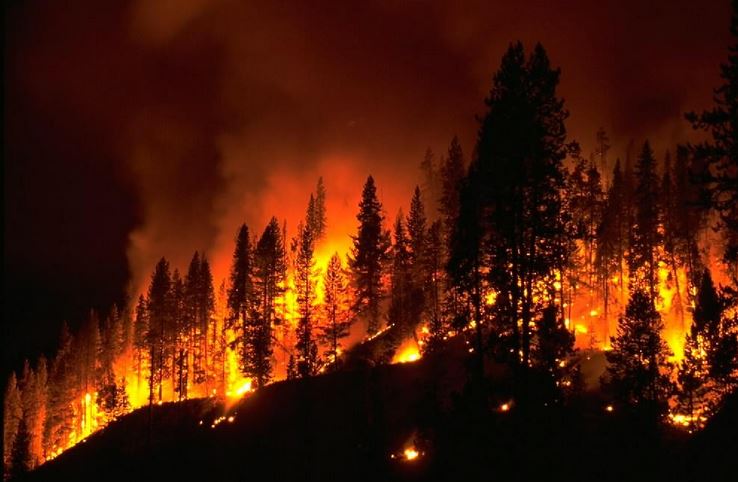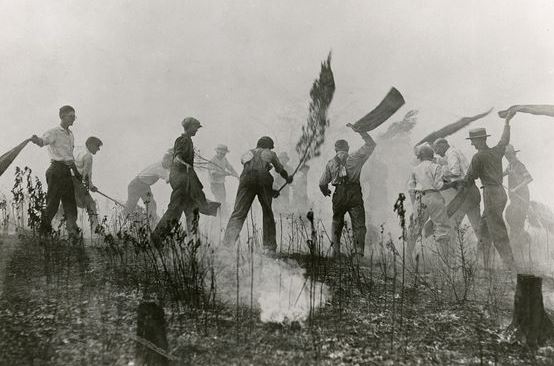
Wild fires burned 69 percent of the Payette National Forest and more than 50 percent of the Boise National Forest since 1985, a new report issued by the Idaho Conservation League shows.
Most of the acres burned in six years of when conditions were dry and temperatures high, the report said. And 64 percent burned on the two southwest Boise national forests and the Salmon-Challis National Forest.
These three forests are dominated by drier, lower-elevation ponderosa pine and Douglas-fir forests as contrasted to the high elevation, wetter forests of north and east Idaho which are dominated by lodgepole. The low elevation forests historically had frequent fires, and the trees and other species had adapted.
“While none of us want to breathe smoke or see flames from our doorstep, there’s no way to remove fire from Idaho entirely,” said Jonathan Oppenheimer, of the Idaho Conservation League and author of the report. “Our challenge is to live with, and prepare for, inevitable fires.”
Oppenheimer analyzed the 2012 fire season and the history of fire in Idaho. Here are some of his key findings:
• Nearly two-thirds (64 percent) of the national forest acres burned fires were low severity or untouched. Forest Service experts said only 13 percent were “high severity.”
• Large fires consumed a disproportionate share of fire costs, with the five largest fires consuming $145 million, 68 percent of the total cost of suppression.
• Nearly 20 years after policies were updated to restore the natural role of fire, the Bureau of Land Management in Idaho has failed to implement any plans to manage natural fires for resource benefit.
• The Charlotte Fire raced through the Mink Creek and Gibson Jack areas of Pocatello and destroyed 66 homes and 29 outbuildings, making it one of the most destructive Idaho fires since the Big Burn of 1910.
Oppenheimer is advocating essentially what firefighters actually have been doing in Idaho, staying out of the way when fires are big and attempting to restore fire to the ecosystem on our terms. To do that communities need to feel safe.
“The wise way forward is to focus thinning around communities, carefully restore fire where it belongs and keep new homes out of dangerous areas,” Oppenheimer said. “Anything that detracts from that is part of the problem, not part of the solution.”
Tom Bonnickson, professor emeritus of forest science at Texas A&M University and a former park ranger challenged this view in a guest opinion recently in the Calaveras (Calif.) Enterprise. Bonnickson was one of our speakers at the 2000 conference the Idaho Statesman co-convened with the Andrus Center for Public Policy: The Fires Next Time.
“We can thin little trees and use prescribed burns to reduce fuels, but that is not enough,” Bonnickson said. “We must use history as a guide and restore the natural immunity of our forests to monster fires. That means cutting whatever trees are necessary, big or small, to recreate the patchiness and diversity of historic forests that kept fires gentle and helpful.”
Oppenheimer quotes Penny Morgan, director of the University of Idaho Wildland Fire Program, who noted that Idaho has led national thinking about fire management for more than 100 years.
“While fire is naturally part of Idaho summers, things are changing in our forests and rangelands,” she said. “Idaho should remain at the forefront of creative solutions to restore forests and keep communities safe.”
And his press release includes Erich Zimmermann, Senior Policy Analyst at Taxpayers for Common Sense. He says its not just a safety and environmental issue but also about saving federal dollars.
“We know that putting out every fire is misguided in places like the backcountry of Idaho,” Zimmermann said. “Experts tell us we can help save money and restore our forests by allowing fire to play a more natural role.”
By Rocky Barker – Blog September 16, 2013
Additional information
Become a Wildland Firefighter Job Description
On the fire line Boise NF Sawtooth Hotshot

